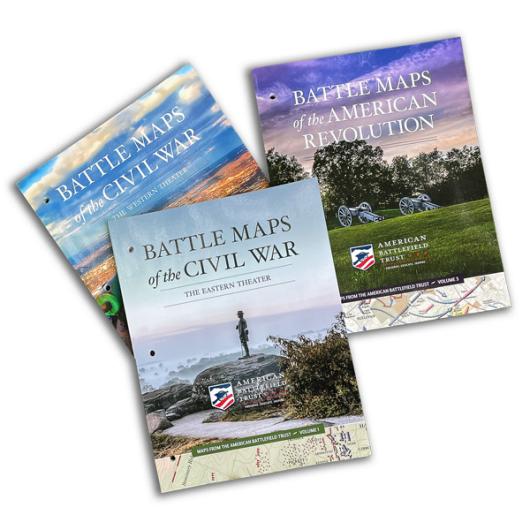American Battlefield Trust History
American Battlefield Trust Is the Result of an Ever-Evolving Imperative
The story of America’s largest battlefield preservation group is one of constant evolution. From a grassroots organization started by historians 35 years ago, it has grown into one of the most successful nonprofit, heritage land preservation organizations in America.
The American Battlefield Trust started as an all-volunteer and regionally focused organization. The Association for the Preservation of Civil War Sites (“APCWS”) was founded in Fredericksburg, Va., in mid-1987 by historians and Civil War buffs concerned that rampant growth was overwhelming and obliterating the Chantilly battlefield in Northern Virginia and threatening more hallowed ground in the area. APCWS began acquiring land the following year, initially in the Mid-Atlantic, but in the early 1990s spreading farther afield to sites in Louisiana, Missouri and other Western Theater states.
In 1991, a second battlefield preservation organization, originally called the American Battlefield Protection Foundation, was created at the behest of Interior Secretary Manuel Lujan. The name was later changed to the Civil War Trust (the first use of this name by the organization). It administered more than $6 million generated for battlefield preservation through a U.S. Mint commemorative coin program.
The two preservation organizations merged in late 1999 to become the Civil War Preservation Trust. Under the leadership of President Jim Lighthizer, the joint organization set new standards of success and efficiency in battlefield land preservation. By early 2018, the organization had averaged 40 acquisitions per year for a decade and was rapidly approaching the impressive milestone of 50,000 acres protected across 24 states.
At the same time, the organization’s mission naturally and steadily expanded. Educational programming has always been a part of operations, but it has become a major growth area in recent years. For its concentrated focus on classroom-friendly resources and battlefield interpretation — both traditional and digital — the Trust received the 2018 Friend of History Award from the Organization of American Historians.
Moreover, the Trust has begun taking the additional step of restoring land to how it looked at the time of a battle. Major efforts in this vein — removing numerous modern structures and rehabilitating the landscape — have been undertaken at Antietam, Franklin, Petersburg and Robert E. Lee’s Headquarters at Gettysburg. Supporters specifically donate to such education, interpretation and restoration projects; funds are not redirected from land acquisition accounts. This broadening scope of activities was reflected in a return to one of the original names for the organization, the Civil War Trust, which debuted in 2011 at the outset of the war’s sesquicentennial commemoration.
The most visible evolution since the 1999 merger began in 2014, when — at the urging of the National Park Service — a subsidiary initiative called Campaign 1776 debuted to pursue a limited amount of preservation activity related to battlefields from the Revolutionary War and War of 1812. The effort was a tremendous success, protecting more than 675 critically important acres in six states in less than four years.
Reflecting on the demonstrable need for a comprehensive approach to battlefield preservation across multiple conflicts —and always mindful of maximizing its efficiency — in May 2018 the Civil War Trust announced the latest stage of its ongoing transformation: the creation of the American Battlefield Trust as an umbrella organization to oversee its diverse activities.
The Civil War Trust and the Revolutionary War Trust (formerly Campaign 1776) continue as land preservation and education entities under the auspices of the American Battlefield Trust, serving as its chief divisions. The adoption of this new structure simply means that we are working and dreaming on a larger scale. It positions us to be a national force for both historic land preservation and advocacy in support of history education in our classrooms.
From the Lexington Green to Appomattox Court House, American soldiers shed their blood for ideals that our nation holds dear. To honor their memory and sacrifice, and to preserve battlefields for the sake of better understanding our history, the American Battlefield Trust continues forward with a name befitting its broader mission.








